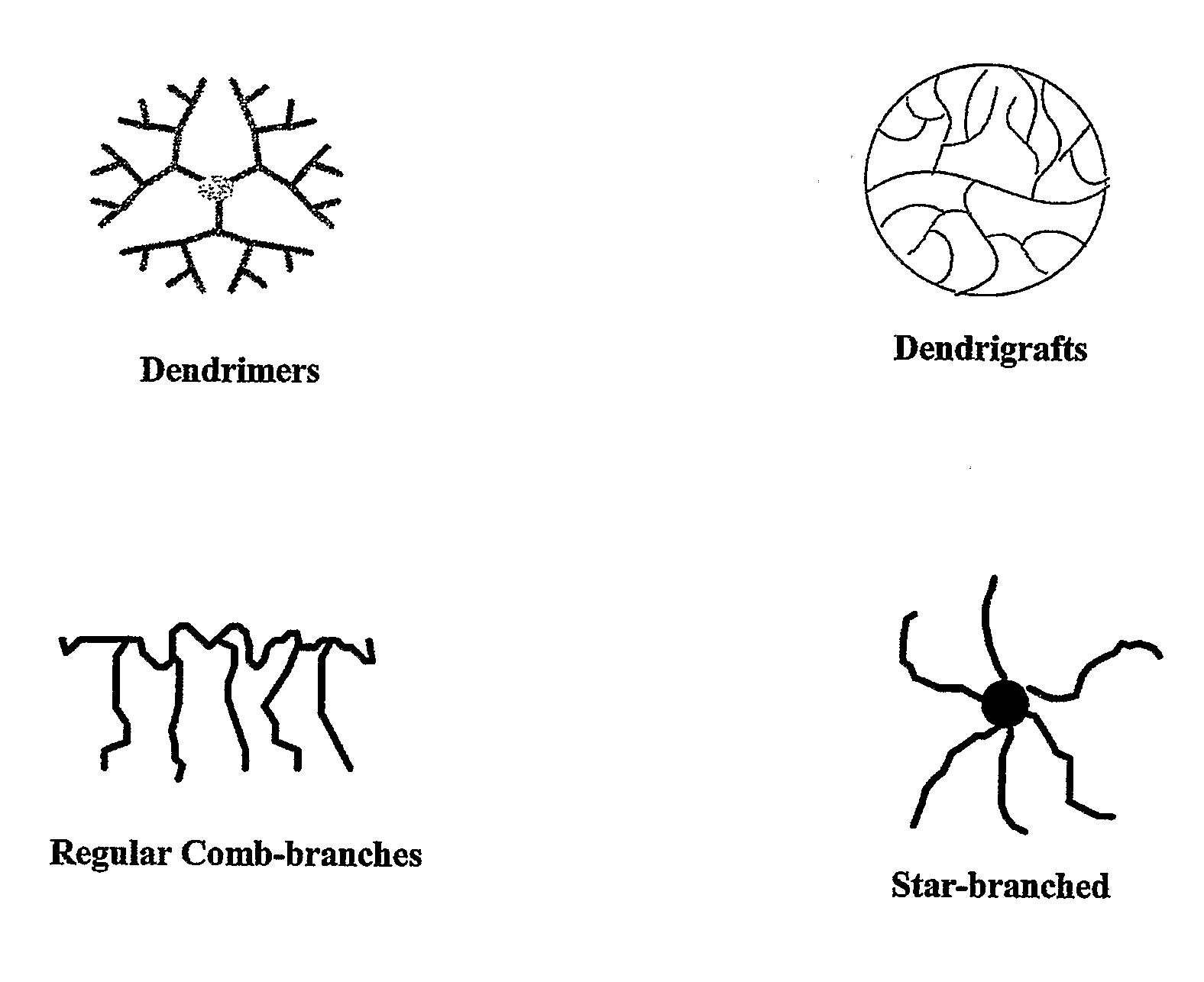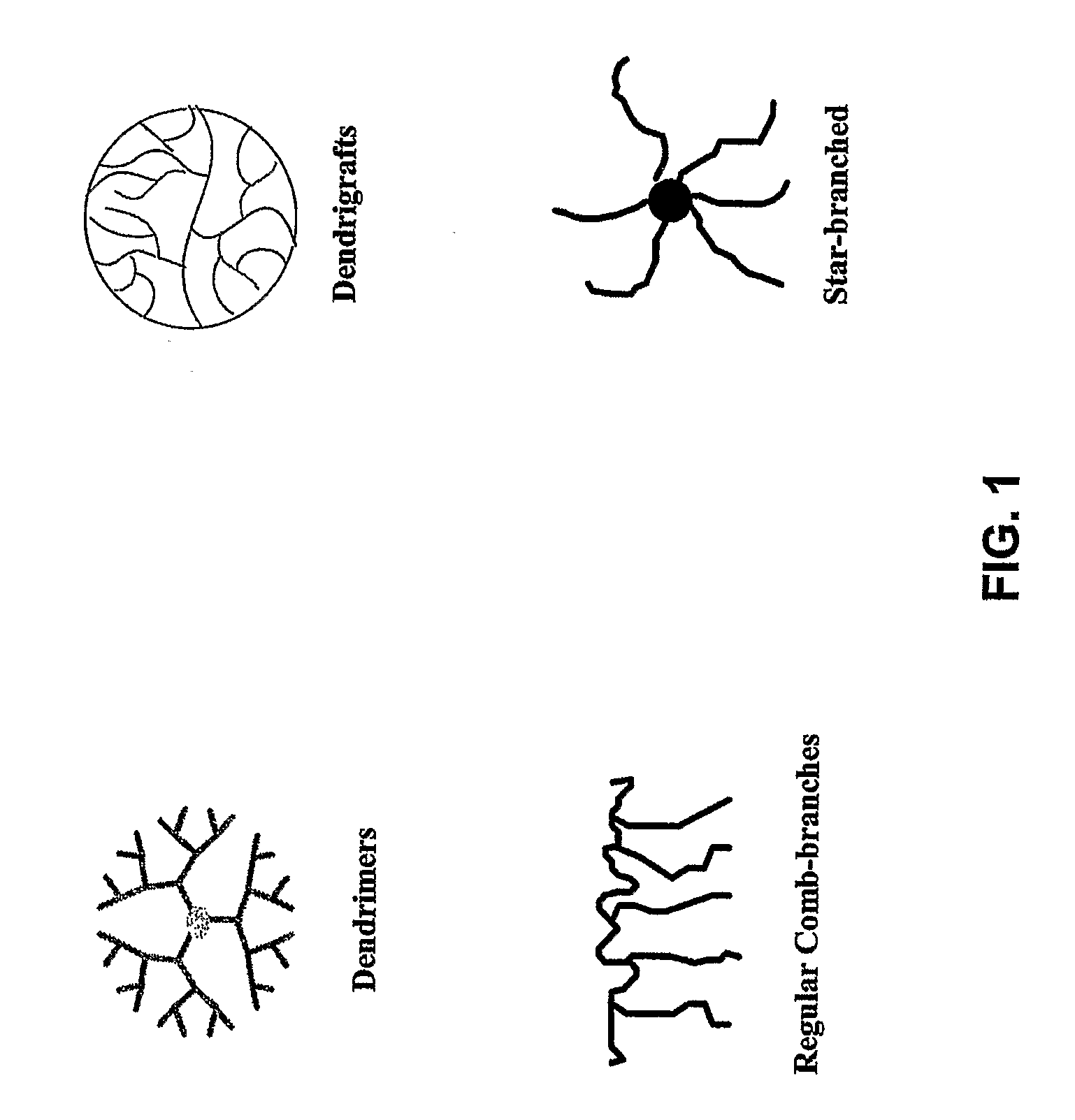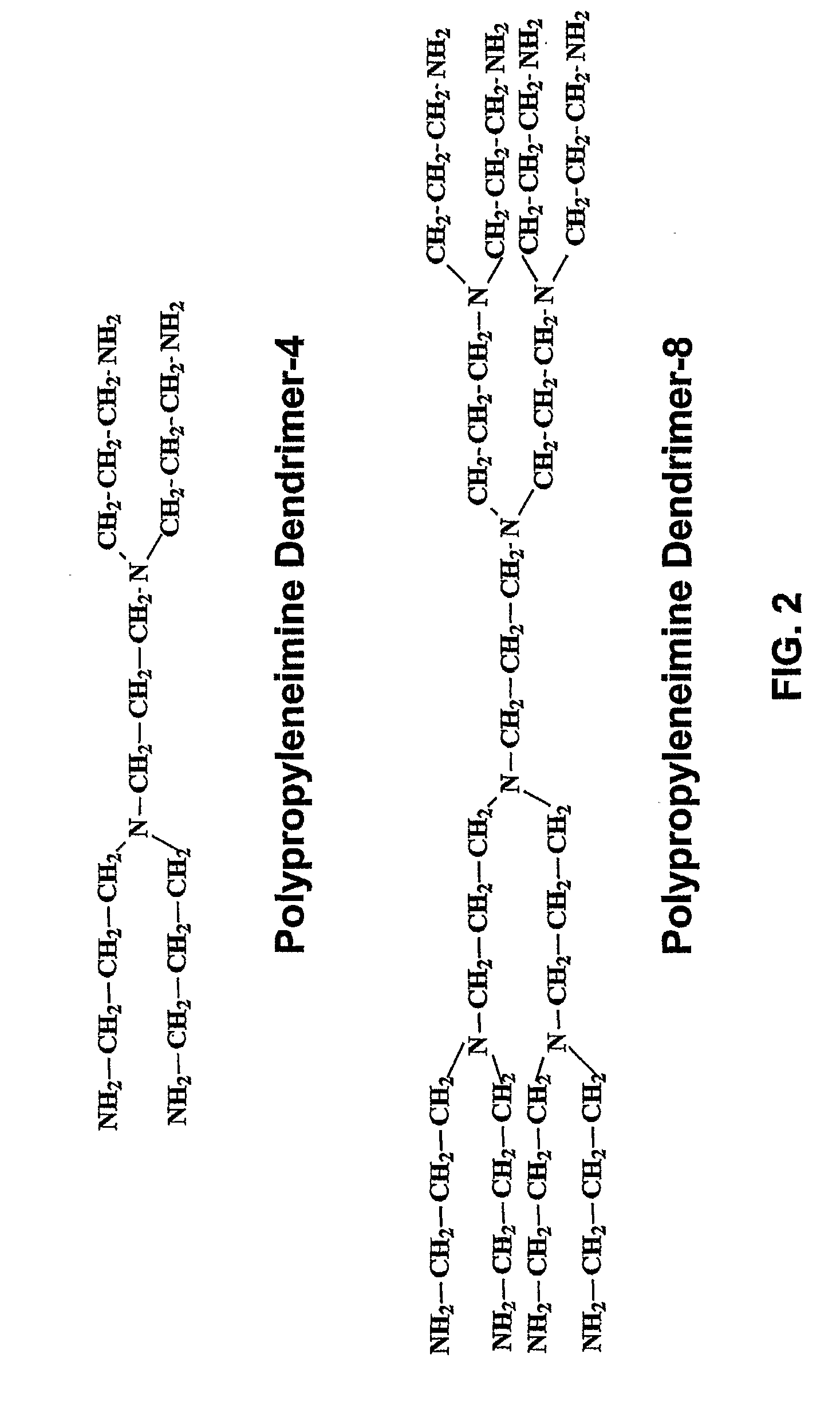Polymer Conjugate Enhanced Bioassays
a polymer conjugate and bioassay technology, applied in the field of bp in composite materials, can solve the problems of cytotoxicity of polymers, unsuitable for carrying bioactive molecules, and unsuitable for -abp and reg-abp, and achieve the effect of rapid detection of target molecules
- Summary
- Abstract
- Description
- Claims
- Application Information
AI Technical Summary
Problems solved by technology
Method used
Image
Examples
examples
[0157]Materials: Symmetrically branched polypropyleneimine dendrimers were purchased from Sigma-Aldrich. Symmetrically branched polyethyleneimine dendrimers and dendrigrafts were prepared according to procedures provided in U.S. Pat. Nos. 4,631,337, 5,773,527, 5,631,329, and 5,919,442. Colloidal gold particles were prepared according to procedures published in the literature (G. Frens et al., Nature Physical Science, Vol. 241, Jan. 1, 1973, 20). All of the antibodies were purchased from Sigma-Aldrich, Biodesign, or Fitzgerald.
Synthesis of Modified Symmetrically Branched PPIs with Amino Functional Groups (m-SB-PPI-NH2-1.0)
[0158]The following reagents including symmetrically branched polypropyleneimine (SB-PPI-4, 8, 16, 32, 64, MW 316, 773, 1687, 3514 and 7,168), methyl acrylate (MA, FW=86.09), propylenediamine (EDA, FW=60.10) and methanol were utilized in this synthesis.
[0159]To a round bottom flask were added 1.0 g PPI-64 dendrimer (MW 7168) and 20 ml methanol (solution A). To a sep...
PUM
| Property | Measurement | Unit |
|---|---|---|
| molecular weight distributions | aaaaa | aaaaa |
| diameter | aaaaa | aaaaa |
| sizes | aaaaa | aaaaa |
Abstract
Description
Claims
Application Information
 Login to View More
Login to View More - R&D
- Intellectual Property
- Life Sciences
- Materials
- Tech Scout
- Unparalleled Data Quality
- Higher Quality Content
- 60% Fewer Hallucinations
Browse by: Latest US Patents, China's latest patents, Technical Efficacy Thesaurus, Application Domain, Technology Topic, Popular Technical Reports.
© 2025 PatSnap. All rights reserved.Legal|Privacy policy|Modern Slavery Act Transparency Statement|Sitemap|About US| Contact US: help@patsnap.com



